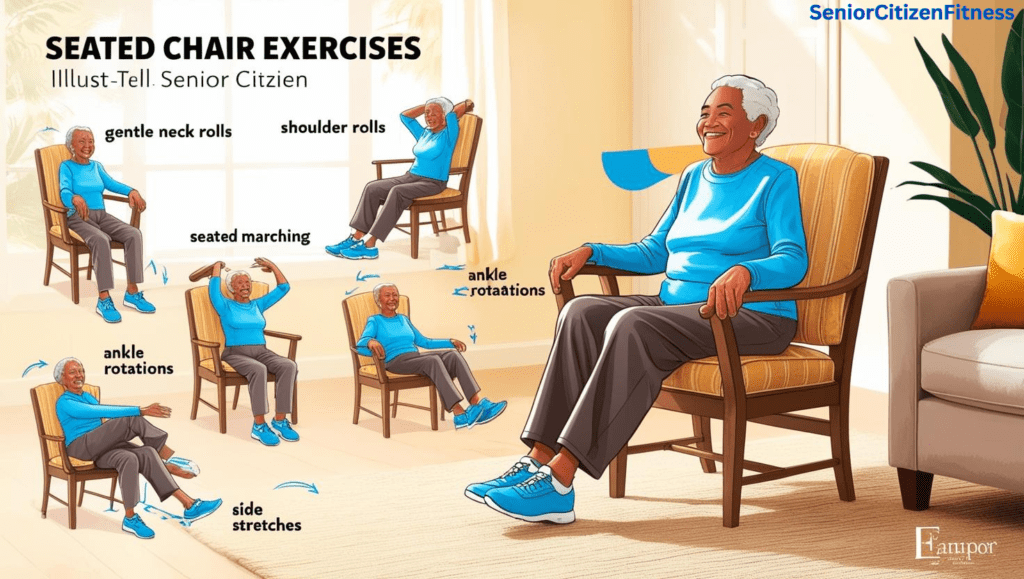
Arthritis comes in a couple of flavors, like osteoarthritis and rheumatoid arthritis, but one thing they all have in common is that they can really make joints unhappy. For seniors with arthritis, that can mean achy joints and stiffness that makes it tempting to skip getting up and moving around.
But guess what? Moving is exactly what you need. Exercise isn’t about running marathons or grinding out intense workouts, but about keeping those hinges—and the rest of your body—healthy and happy. Think of exercise as a tool that can relieve some of the pain and make your daily activities a bit easier.
Getting active brings in a load of benefits, especially when arthritis is trying to slow you down. Exercise can help strengthen the muscles surrounding your joints, which reduces stress on them. Plus, it works wonders for your mood and energy levels, helping you sleep better and even boosting your balance.
It’s totally normal to have concerns about exercising with arthritis. After all, inflamed joints aren’t exactly going to send their regards. But, incorporating the right exercises can be a fantastic way to manage pain, stiffness, and even fight off the ever-present fatigue you might feel. Whether it’s a gentle walk, a stretch, or an activity like swimming, it’s all about keeping yourself in motion in a way that feels good.
The Best Exercises for Seniors with Arthritis
Finding the right exercise is key when managing arthritis, especially for seniors. It doesn’t have to be fancy or complicated. The goal is to keep your joints moving without adding extra stress or causing injury.
Range-of-motion exercises are a great starting point. These gentle movements help maintain flexibility and reduce stiffness, like stretching your arms overhead or rolling your shoulders. They’re simple, but they can make a big difference when done regularly.
If you’re looking for something a bit more, strengthening exercises are where it’s at. Building up those muscles around your joints can offer terrific support and protection. You don’t need to hit the gym with heavy weights; using resistance bands or lighter hand weights can do wonders.
Sometimes, the best exercise isn’t traditional exercise at all. Activities like gardening, stretching while watching TV, or even taking a leisurely walk with the dog count as movement too. The more you incorporate these moments into daily life, the better you’ll feel.
And hey, don’t shy away from trying things like yoga or tai chi. They’re gentle on the body, promote balance, and often include relaxation techniques. Besides, who doesn’t love a good stretch to unwind those tense muscles? Ensuring activities suit your fitness level and comfort is what matters most.
Developing a Safe Exercise Routine
Starting an exercise routine when dealing with arthritis means taking it slow and steady. Jumping in with both feet might do more harm than good, so always chat with your healthcare provider first to figure out what’s best for your situation.
Once you’ve got the green light, it’s all about protecting those joints while getting the most out of your workouts. Warm-ups aren’t just for the pros; they’re a smart way to ease into your routine. Simple movements can prepare your body, making everything else feel more manageable.
Consider heat therapy before you get moving. A warm shower or heating pad can loosen up those stubborn joints, making exercise much more comfortable. And when you’re finished, ice might be your best friend, especially if you notice swelling.
Listen to what your body is telling you. It’s super important to distinguish between normal fatigue and pain that signals a problem. If something feels off, don’t push it. Exercise is supposed to be beneficial, not a painful experience.
Remember, gentle movements are key. If things feel too intense, it’s okay to slow down or even take a break. The goal here isn’t to break records but to keep those joints ready for everything life throws your way.
Building a Balanced Exercise Plan for Arthritis
Creating a balanced exercise plan is all about hitting those different activity types without overloading your joints. Variety isn’t just about keeping things interesting; it’s ensuring your body stays fit from all angles.
Mixing up your week with different exercises keeps things fun and effective. You’ll want a good mix of aerobic, strengthening, and flexibility exercises. Aim to spread these out, giving your joints and muscles a chance to recover between sessions.

Aerobic exercises, like a walk or swim, are great for keeping your heart healthy and boosting energy levels. Try aiming for about 150 minutes a week, but remember, breaking this into shorter sessions can be just as beneficial. Listen to your joints to find what works best for you.
Strengthening exercises deserve a spot on your schedule too. By targeting all major muscle groups, you’ll find it easier to support everyday movements. Resistance bands, machines, or even simple weights at home can help build the strength you need.
On top of that, don’t forget flexibility exercises. Keeping those range-of-motion workouts regular ensures your joints stay as functional as possible. Plus, adding in yoga or tai chi not only helps with flexibility but also improves balance and concentration.
Fusing these activities into your plan makes for a comprehensive routine that doesn’t just focus on one area. By listening to your body and adjusting as needed, you’ll come up with a plan that enhances your quality of life without overstressing your joints.
Navigating Challenges and Staying Motivated
Keeping the motivation going with exercise when you have arthritis can be tricky. The biggest hurdle can often be the ‘Why bother?’ moment when joints are feeling extra stubborn. The good news? You’re not alone! Seeing others who’ve pushed through similar challenges and come out on top can really boost morale.
Setting realistic goals is key here. Start small and gradually build up. Whether it’s managing a full walk around the block or adding an extra minute of stretches, every little achievement counts. Tracking your progress over time can be a huge encouragement. It’s empowering to look back and see just how far you’ve come.
Finding a community or buddy for encouragement can make all the difference too. Joining a local exercise class, whether online or in person, brings support and camaraderie. Plus, it’s way more fun! Some classes even focus on arthritis-friendly routines, providing an added layer of comfort.
Incorporating exercise into daily routines means it doesn’t have to be a big event or a separate task. Maybe it’s stretching in bed before you rise, or taking a few minutes to walk during your lunch break. These small actions genuinely add up over time, improving both mood and physical well-being.
At the end of the day, staying active with arthritis is all about resilience and finding joy in movement. It’s about embracing what works, ditching what doesn’t, and continually adapting to your body’s needs.
Embracing a Lifestyle of Movement
Making exercise a regular part of life with arthritis might seem daunting at first, but it’s well worth the effort. It’s not just about easing the joint pain and stiffness; it’s about giving yourself a leg up in maintaining independence and enjoying a higher quality of life.

By integrating exercise into everyday life, it becomes second nature. Think of movement like brushing your teeth – just another healthy habit that fits naturally into your routine.
In conclusion
Staying active with arthritis isn’t just doable; it’s an essential part of managing its effects and living life to the fullest. With the right approach, exercise becomes less of a task and more of a daily gift you give to yourself, paving the way to brighter, healthier days.
Exercise and arthritis may sound like strange bedfellows, but they’re the ultimate power couple when it comes to improving life quality. It’s about moving at your own speed and making each move count. With the right tweaks and a touch of resilience, staying active doesn’t just become possible—it becomes a game changer!
Please note that the information provided in the Senior Citizen Fitness Blog articles cannot replace individual advice from health professionals. Please consult your physician before starting a new fitness program.


